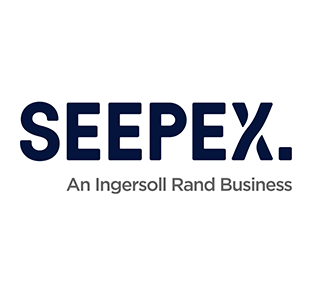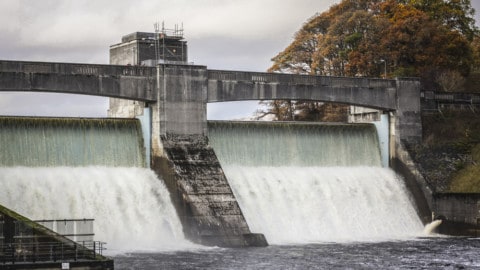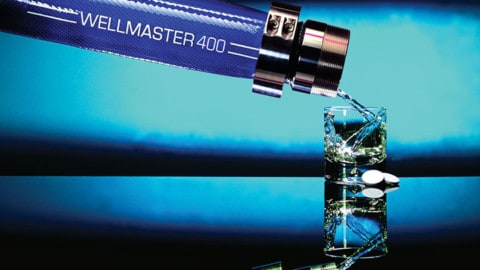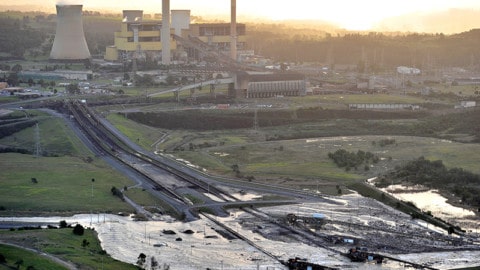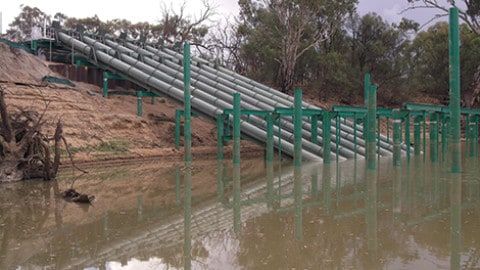In this ongoing interview series, we talk in-depth with the end users of pumps across a range of industries and applications. This edition we interview Mark Faith, Reliability Engineer at AGL Energy Ltd.
Can you explain a bit about the procurement process for pumping equipment?
During my career the pumps I have been generally working with are very specialised and were rebuilt rather than replaced. If pumps required replacing they were generally replaced with like for like, as this ensured ease of installation without the need for base plates or electrical modifications. Now there is a requirement to increase efficiency, reduce power consumption and also stabilise system pressure through the use of variable frequency drives.
The Mechanical engineers are generally responsible for the development of technical specifications of any pump procurement. Some of these specifications are:
• Pump duty;
• System suction and discharge pressures;
• Fluid temperature;
• Speed;
• System curve;
• Material; and
• Part Availability.
What testing do you conduct for pumping equipment?
Under normal circumstances all newly installed pumps will undergo vibration and performance testing as part of the commissioning process. This serves two purposes:
• to ensure that the pump satisfies the design specifications and acceptance; and
• to gain a baseline performance figure and curve against which future performance results can be compared.
The criticality of the pump determines the technical requirements and accuracy of performance testing required. The business must then determine the frequency of testing required.
Pipe thickness surveys are an important factor in the health and reliability of a pumping system. Surveys of the pipe work are required to ensure that the thickness of the pipe is adequate for the purpose and that any high erosion areas can be monitored and repaired pro-actively.
What are the best ways to ensure good communication and get the best results between client, consultant and supplier?
I believe good communication is vital in all aspects of life! One must ensure that the communication path is always open when dealing with consultants and suppliers. They must understand your requirements, and in my opinion site visits are one of the best ways to achieve that understanding.
What are the most important factors in pump selection?
At a minimum a pump must meet system duty requirements. If possible allow an extra 10-15% performance above system duty to allow for wear and reduction in performance. Pump component material must also be considered to ensure that the wear rate or corrosion is not excessive. Maintainability is another important factor. Far too often we are observing pumps that are installed in difficult locations to service and maintain. This leads to inadequate maintenance being performed, reducing the reliability of the pump and increase in maintenance costs.
In today’s market carbon pricing and energy efficiency considerations are more important than ever before. In-house energy usage is being monitored and reduced where possible. So, energy efficiency will play a more dominant role in pump and all plant installation into the future. In the not too distant future I believe that the standard for acceptance testing will include efficiency guaranties. It is something that will become second nature to us.
How important are the maintenance and repair schedule and costs in project planning?
I think that future maintenance access and repair scheduling have been overlooked in recent years. Plants are being built under strict budgets and with minimal engineering support. Compromises are increasingly common practice and diligence around the small items ie cooling water, sump pumps systems are not attracting the required engineering time allocation required. This is leading to considerable maintenance or extra project spend being incurred in order to rectify the shortcomings.
In most circumstances life cycle costing will be factored into the project, as you need to calculate what the impact will be on the maintenance budget.
Can you explain a bit about your on-site servicing and routine maintenance?
Presently at AGL there is minimal online performance monitoring of pumps. My thoughts are that all pumps should be maintained on a condition monitoring regime. Pump performance will monitor the performance and internal condition of the pump, vibration analysis will monitor the bearing condition and also internal looseness. The method of how the pump is monitored depends upon its criticality. When determining whether to install an online system one must look at many factors:
• Cost of installation;
• Accuracy required;
• Wear rate of the pump;
• Calibration of installed equipment;
• Frequency of testing; and
• Resolution of trend and points.
Ideally all pumps should be performance tested, except for those of a non-critical nature, which should be run to failure. Performance results and trending allows for improved budgeting and increased plant reliability, also the overhaul strategy and budget requirements into the future.
Can you explain your view and relationships with the Australian pump industry?
At present I am working as the AGL Reliability Engineer and have not been working with the Australian pump industry for some time. In the past they we have had a very good relationship with the pump industry, through various sales and services departments. An important issue that faces all industries today is the reduction in the internal workforce. Overhauls of critical pumps can no longer be resourced internally and it has become more cost effective to engage external expertise. For this reason there is an increasing reliance upon the pump industry to provide maintenance services within Australia.
How important is it that a pump is made in Australia?
There are many pumps on the market today and many industry pressures. It is unreasonable for us to think that Australia is going to have the capacity to produce all the pumps to meet industries’ requirements. If the product suits the business requirements and is within the budget then where it is made is irrelevant. The availability of spare parts and service options must also be considered when purchasing a pump.
What are the most important issues in pumps today?
Pump efficiency is one of the most important issues today. It is costing business large amounts of money to transport fluid and slurries around process plant. The increase in energy costs efficiency is becoming a major concern.
Where do you see the pump industry going in the future?
I have not put a lot of thought into this over the years. The technology in the pumping industry has developed over time. But in my career I have not seen any ground breaking advancement, I have seen new materials being developed to reduce wear of the casing and wear rings but the fundamentals of pumps have stayed the same. I have no doubt that there is or will be someone working in his shed that will come up with something new. Hopefully I will be alive to see it! ■
About Mark Faith
I started my career as an apprentice fitter and turner with the SECV at Yallourn’s apprentice training annex, then after my apprenticeship I worked at Yallourn ‘W’ Power station. At this time I was exposed to a wide range of pumps, from Worthington split case (55l/s @ 130kPa) to Ingersoll Rand multi stage Boiler feed pumps (160kg/s@ 21MPa). During this time the maintenance philosophy was preventative based, with all pumps dismantled to various degrees to gauge their condition.
In 1996 I joined the condition monitoring team and worked in this area for 12 years. During this time the team worked on various condition monitoring techniques, including: Vibration analysis; Boiler tube thickness testing; Thermography; and Pump performance testing.
Pump performance testing techniques differed depending upon the critical nature of the plant and the requirement of repeatability. The instrumentation used was transit time and Doppler strap on flow meters, analogue pressure gauges, differential pressure cells (analogue) and K type thermocouples.
The pump performance testing and vibration regimes worked very well and allowed the business to move from preventative based maintenance to condition based maintenance/predictive.
During my time within the condition monitoring field, technology changed and assisted in the reduction of labour hours and increased the repeatability of the data. In some cases the instrumentation would be calibrated before installation, then spend over 1 week on the plant during testing and when removed and calibrated once again. In some cases the DP cells could drift thus incurring a 5% error in the flow readings. With the development of HART differential pressure cells, digital pressure gauges helped to reduce the instrument drift and thus improving the accuracy of the measurements. The implementation of a digital control system and ISO PI allowed online performance monitoring and alarming.
I am presently working as a Reliability Engineer with AGL. Over the past year I have been developing the Reliability Framework across all of AGL generation assets and due to my previous experience am able to assist the condition monitoring team as required.



